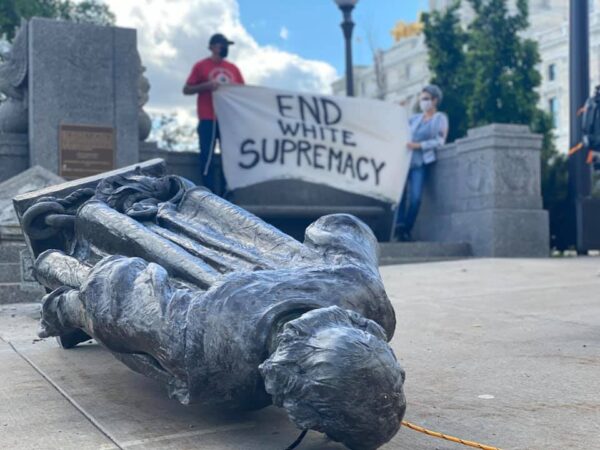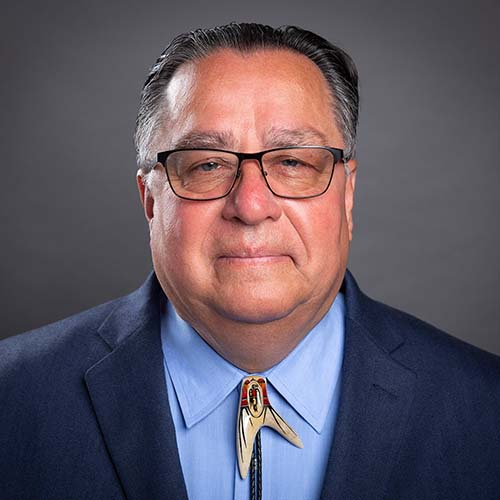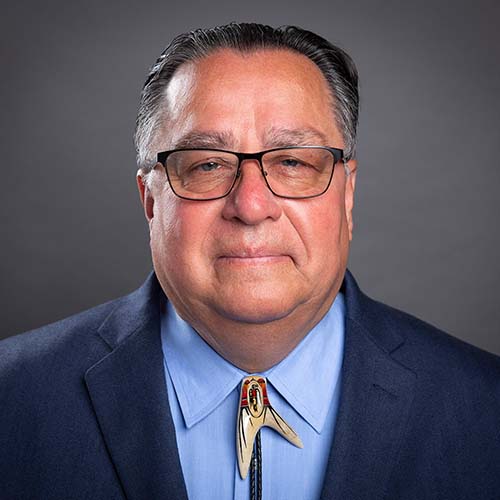
- Details
- By Levi Rickert
OPINION. As a Potawatomi schoolboy, I never bought into the constructed history taught in the Columbus Day poem stating that “in 1492, Columbus sailed the ocean blue” and discovered America.
Talk about a hoax.
My siblings and I knew Christopher Columbus got lost and thought he was in India when he landed in the Americas. And, we, as with other Native people, knew it is hard to discover land where others already live.
History is full of constructed stories that help to perpetuate myths and legends for nations to build pride from one generation to the next. Some call it patriotism, which I know American Indians are as evidenced by their willingness – and pride – in joining the military at higher levels than other racial and ethnic groups in the United States.
Interestingly enough, Columbus actually never made it to the land now known as the United States. He never made it to the country that today celebrates Columbus Day as a federal holiday. Martin Luther King Jr. is the only other person with a federal holiday named in his honor.
History records show Columbus was responsible for the deaths of many Indigenous people. So, he was a murderer. It is argued Columbus set the stage for the largest genocide in the history of the world. Millions on top of millions of Indigenous people died as a result of Christopher Columbus.
During the past several years, there has been a stunning and tragic rise in the number of missing and murdered Indigenous women in the United States and Canada. Experts argue that the shameful and all-too-common practice of sexual abuse of Indigenous women and girls is not a new phenomenon, as it is believed to have begun when Indigenous people were taken by Columbus and his men to Europe. Once there, the Indigenous females were sex trafficked.
So, it is understandable that each year there is a gnawing pang every time Columbus Day comes around. Native people don’t take part in the celebration of murder.
Instead, we celebrate Indigenous Peoples’ Day. The movement that began decades ago has swept the nation and continues to do so even now. Recently, in my hometown, Grand Rapids, Mich., the mayor on Sept. 29, 2020 proclaimed the second Monday of each October to be Indigenous Peoples’ Day. Last year, Michigan joined the ranks of a dozen U.S. states that adopted Indigenous Peoples Day in lieu of Columbus Day in a proclamation by Gov. Gretchen Whitmer.
The exchange from celebrating Columbus to celebrating Indigenous Peoples seems to have ruffled the feathers of President Donald Trump. On Friday, the White House released the president’s Columbus Day Proclamation. He used the proclamation to perpetuate his disdain for those who want to provide a clearer and more complete interpretation of American history.
Here’s what the president says in his proclamation:
“Sadly, in recent years, radical activists have sought to undermine Christopher Columbus’s legacy. These extremists seek to replace discussion of his vast contributions with talk of failings, his discoveries with atrocities, and his achievements with transgressions. Rather than learn from our history, this radical ideology and its adherents seek to revise it, deprive it of any splendor, and mark it as inherently sinister.”
The president’s statement here, filled with trigger words such as “extremists” and “radical,” are meant to sway his followers to look down on anyone who seeks to be different.
What Trump fails to understand is intelligent people constantly look for the deeper truth in life matters. I am talking about people who are not complacent to believe misinformation, lies and fabricated history.
After the riots in Charlottesville, Virginia in August 2017 and the subsequent debate that ensued calling for the removal of Confederate statues, the American Historical Association issued a statement that reads in part:
“Knowledge of such facts enables debate that learns ‘from history.’ Equally important is awareness of what we mean by ‘history.’ History comprises both facts and interpretations of those facts. To remove a monument, or to change the name of a school or street, is not to erase history, but rather to alter or call attention to a previous interpretation of history. A monument is not history itself; a monument commemorates an aspect of history, representing a moment in the past when a public or private decision defined who would be honored in a community’s public spaces.”
The key point here is interpretation of facts.
The president has it wrong. It is time for Americans to get past the constructed lies of the past that allow for the celebration of a greedy murderer named Christopher Columbus.
On this second Monday of October, I choose to celebrate Indigenous Peoples' Day.
More Stories Like This
Superhuman. Should We Be Better Than We Are?Senator Ben Nighthorse Campbell Proved Representation Matters
The Lie We Keep Telling About Wounded Knee
Another Weapon of Mass Destruction
Colorado cannot heal until it confronts Sand Creek honestly
Help us defend tribal sovereignty.
At Native News Online, our mission is rooted in telling the stories that strengthen sovereignty and uplift Indigenous voices — not just at year’s end, but every single day.
Because of your generosity last year, we were able to keep our reporters on the ground in tribal communities, at national gatherings and in the halls of Congress — covering the issues that matter most to Indian Country: sovereignty, culture, education, health and economic opportunity.
That support sustained us through a tough year in 2025. Now, as we look to the year ahead, we need your help right now to ensure warrior journalism remains strong — reporting that defends tribal sovereignty, amplifies Native truth, and holds power accountable.
 The stakes couldn't be higher. Your support keeps Native voices heard, Native stories told and Native sovereignty defended.
The stakes couldn't be higher. Your support keeps Native voices heard, Native stories told and Native sovereignty defended.
Stand with Warrior Journalism today.
Levi Rickert (Potawatomi), Editor & Publisher

